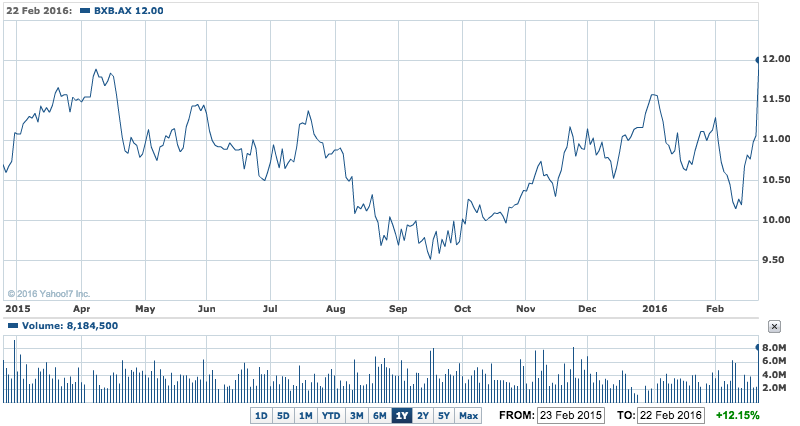Global logistics giant Brambles (BXB) has joined the growing list of local companies to be caught by the rise in the value of the US dollar in the past year – QBE will be another with its final profit announcement this morning – with a 2% dip in revenue to $US2.8 billion and a 2% rise in net profit for the six months to December.
The company however pointed out that on a constant currency basis, which attempts to smooth out currency swings, revenue was up 8% half year on half year, and interim earnings were up 10%.
But despite the weak 2% lift in net profit to $US290.9 million ($A406 million) and the headwinds from the stronger greenback, full year earnings guidance was lifted.
CEO Tom Gorman said that Brambles now expects an 8% to 10% improvement in underlying profit, against the previous guidance of a 6% to 8% lift. The company said the “new guidance translates to Underlying Profit of US$1,015-1,035 million at 30 June 2015 exchange rates".
And in another positive vote in the outlook, interim dividend was lifted half a cent to 14.5 A cents for the latest half year.
And with the announcement of a big move into new technology, investors loved all the news and lifted Brambles shares 8.5% to $12, after hitting a 52 week intraday high of $12.10.
BXB 1Y – Brambles shares hit 52-week high

And despite saying the company was facing “uncertain” economic conditions, Mr Gorman said the half year result and improved outlook resulted from “strong new business wins” in its pallets operations.
Mr Gorman said in yesterday’s statement that “Although macroeconomic conditions remain uncertain, we are on course for a strong result in FY16 and are confident in the robustness of our longer term outlook”.
The company is also it is expanding into “big data” by setting up a new company called BXB Digital to be based in California’s Silicon Valley.
The company expects the new entity to eventually become a profit centre in its own right as it seeks to capitalise on the next rapid advance in the digital economy, described as the Internet of Things, where sensors embedded into devices, machines and objects collect and exchange data in real time.
The analysis of that data is particularly valuable, especially in logistics and transport. Companies across the world are already looking to the commercial application of tracking each movement in a complex supply chain, and consumer behaviour and usage patterns of people using devices, equipment and consumer goods. Many transport companies offer that for air freight and ecommerce deliveries for consumers.
But now big companies in transport, logistics (Amazon for example) are looking to link their delivery trucks, containers, pallets, etc to the software systems of manufacturers, wholesalers, buyers, customers and consumers – with all the work being done ‘in the cloud’.













